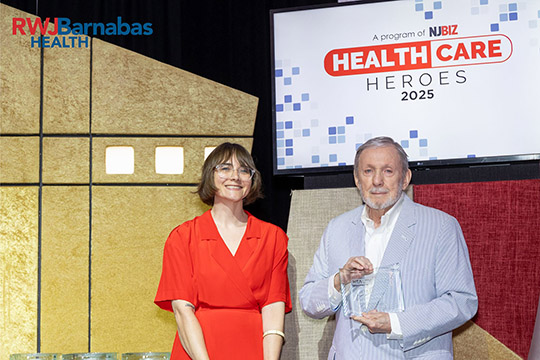Report on Public-Private Partnerships Advancing Sustainable Development Goals in New Jersey’s Vocational Education Sector
A comprehensive initiative in New Jersey, involving over 4,000 industry professionals and the state’s 21 county vocational-technical schools, is making significant strides toward achieving several United Nations Sustainable Development Goals (SDGs). Through strategic collaborations, this program enhances educational outcomes, promotes sustainable economic growth, and strengthens community infrastructure by aligning vocational training with real-world industry needs.
Strategic Framework for Achieving SDG 4: Quality Education
The core of this initiative is its direct contribution to SDG 4 (Quality Education), particularly Target 4.4, which aims to increase the number of youth and adults with relevant skills for employment and entrepreneurship. The partnerships ensure that educational programs are current, relevant, and directly applicable to the modern workforce.
Mechanisms for Educational Enhancement
- Curriculum Co-development: Industry experts serve on advisory committees for every career program, from automotive to computer science, ensuring curricula align with current industry standards and technological advancements.
- Work-Based Learning: Partnerships facilitate structured workplace learning, internships, and apprenticeships, providing students with invaluable hands-on experience.
- Resource Provision: Corporate partners frequently donate state-of-the-art equipment and supplies, allowing students to train on the same tools used in their future professions.
Fostering SDG 8: Decent Work and Economic Growth
By creating a direct pipeline from education to employment, the program actively supports SDG 8 (Decent Work and Economic Growth). It addresses Target 8.6 by reducing the proportion of youth not in employment, education, or training (NEET) and equipping them for stable, in-demand careers.
Key Outcomes for Economic Development
- Targeted Workforce Development: Employers help shape the skills of their future workforce, addressing specific labor shortages and ensuring a supply of qualified candidates.
- Enhanced Employability: Students gain technical competencies, professional skills through mentorship, and direct access to potential employers, significantly improving their job prospects upon graduation.
- Local Economic Strengthening: The model supports local businesses, from small family-owned enterprises to large corporations, by providing a skilled local workforce, thereby bolstering New Jersey’s economic resilience.
Case Studies: Partnerships Driving Sustainable Progress
Specific collaborations exemplify the initiative’s impact across multiple SDGs, including SDG 3 (Good Health and Well-being), SDG 7 (Affordable and Clean Energy), SDG 9 (Industry, Innovation, and Infrastructure), and SDG 11 (Sustainable Cities and Communities). These efforts are underpinned by SDG 17 (Partnerships for the Goals), which highlights the importance of multi-stakeholder collaboration.
Advancing Energy and Infrastructure (SDG 7 & SDG 9)
- PSEG Nuclear & Salem County Vocational Technical Schools: This long-standing partnership led to the creation of the Academy for Energy Applications. By providing curriculum guidance and tools, PSEG Nuclear helps train the next generation of professionals for the energy sector, contributing to a stable and innovative energy industry.
- Ocean County Vocational Technical School & Construction Firms: Local employers like Earle Residential-Commercial and Eosso Brothers Paving supported the launch of a Heavy Equipment Operator Program. Through grant matching and equipment donations, they help train students for roles critical to building and maintaining resilient infrastructure.
Strengthening Community Health and Well-being (SDG 3 & SDG 11)
- Essex County Schools of Technology & Healthcare Providers: In partnership with RWJBarnabas Health, University Hospital, and Hackensack Meridian Health, the school trains students as Emergency Medical Technicians (EMTs) using a life-sized ambulance simulator. This directly strengthens the local healthcare system and enhances community emergency response capabilities.
- Cooper University Health Care & Camden County Technical Schools: Students in the Heating, Ventilation, and Air Conditioning (HVAC) program receive specialized work-based learning at Cooper Hospital. This partnership ensures that critical health infrastructure is maintained by a skilled workforce, safeguarding patient and employee well-being.
A Model for Sustainable Collaboration
The New Jersey Council of County Vocational-Technical Schools has streamlined the process for creating these vital partnerships, enabling businesses to easily connect with schools. The annual “Business Partner of the Year” award recognizes the profound impact of these collaborations.
Opportunities for Partnership Engagement
- Advisory Committee Participation
- Donation of Equipment or Supplies
- Student Mentorship and Project Guidance
- Guest Speaking Engagements
- Hosting Internships and Work-Based Learning
- Teacher Training and Professional Development
- Apprenticeship Program Development
- Hiring Graduates for Full-Time Employment
This initiative serves as a powerful model for how targeted public-private partnerships can effectively advance the Sustainable Development Goals, creating a positive feedback loop that benefits students, industries, and the community at large.
1. Which SDGs are addressed or connected to the issues highlighted in the article?
SDG 4: Quality Education
The article extensively discusses vocational and technical education programs designed to provide students with relevant job skills. It highlights partnerships between schools and industries to ensure the curriculum is up-to-date and practical. This directly aligns with SDG 4’s goal of ensuring inclusive and equitable quality education and promoting lifelong learning opportunities.
SDG 8: Decent Work and Economic Growth
The core theme of the article is creating a “workforce pipeline” to fill in-demand jobs. By training students with specific skills that employers need, these programs facilitate the transition from education to employment, contributing to productive employment and decent work for all, which is the essence of SDG 8.
SDG 17: Partnerships for the Goals
The article is a showcase of multi-stakeholder partnerships. It details collaborations between public entities (New Jersey’s 21 county vocational-technical schools), coordinating bodies (New Jersey Council of County Vocational-Technical Schools), and private sector companies (PSEG Nuclear, Cooper University Health Care, Eosso Brothers Paving). This model of public-private partnership is central to SDG 17.
SDG 3: Good Health and Well-being
The article provides a specific example of training students as Emergency Medical Technicians (EMTs) through partnerships with hospitals like RWJBarnabas Health and University Hospital. This initiative directly addresses the need for skilled healthcare professionals, contributing to strengthening the local health system and community well-being, which is a key aspect of SDG 3.
2. What specific targets under those SDGs can be identified based on the article’s content?
SDG 4: Quality Education
- Target 4.4: By 2030, substantially increase the number of youth and adults who have relevant skills, including technical and vocational skills, for employment, decent jobs and entrepreneurship.
- Explanation: The article is centered on this target. Programs like the “Academy for Energy Applications,” the “Heating, Ventilation and Air Conditioning program,” and the EMT training are explicitly designed to provide students with “real-world skills” and “technical and professional skills” that are directly applicable to in-demand jobs.
- Target 4.3: By 2030, ensure equal access for all women and men to affordable and quality technical, vocational and tertiary education, including university.
- Explanation: The county vocational-technical schools described in the article represent an accessible pathway for students to gain quality technical and vocational education as a direct route to a career, fulfilling the aim of this target.
SDG 8: Decent Work and Economic Growth
- Target 8.6: By 2020, substantially reduce the proportion of youth not in employment, education or training.
- Explanation: Although the target date has passed, the article’s initiatives work towards its goal. The entire purpose of these partnerships is to “bolster the workforce pipeline” and ensure students can be hired directly after graduation, thus reducing the number of youths not in employment, education, or training (NEET).
SDG 17: Partnerships for the Goals
- Target 17.17: Encourage and promote effective public, public-private and civil society partnerships, building on the experience and resourcing strategies of partnerships.
- Explanation: The article is a testament to this target in action. It describes partnerships between public schools (“Salem County Vocational Technical Schools”), private companies (“PSEG Nuclear,” “Cooper University Health Care”), and coordinating councils (“New Jersey Council of County Vocational-Technical Schools”) to achieve shared educational and workforce goals.
SDG 3: Good Health and Well-being
- Target 3.c: Substantially increase health financing and the recruitment, development, training and retention of the health workforce…
- Explanation: The partnership between Essex County Schools of Technology and local hospitals to train EMTs directly addresses the “recruitment, development, [and] training” of the health workforce. The article states the program’s mission is to “fulfill a current demand in health care” and “cultivate a pipeline of professionals.”
3. Are there any indicators mentioned or implied in the article that can be used to measure progress towards the identified targets?
SDG 4: Quality Education
- For Target 4.4:
- Implied Indicator: The number of students trained and graduating from vocational programs. The article mentions the “number of students trained to fill in-demand roles.”
- Implied Indicator: The acquisition of specific, employer-defined skills. The article notes that employers provide “wish lists” of skills and help students “hone the technical and professional skills on the lists.”
SDG 8: Decent Work and Economic Growth
- For Target 8.6:
- Implied Indicator: The number of internships, apprenticeships, and other work-based learning experiences offered. The article lists these as key opportunities for employer partnerships.
- Implied Indicator: The employment rate of graduates. The article mentions the goal of “Hiring students and/or graduates for part- and full-time employment” and quotes an employer saying, “we give them a good, valuable experience and they will stay with us.”
SDG 17: Partnerships for the Goals
- For Target 17.17:
- Indicator: The number of professionals and businesses involved in the partnerships. The article explicitly states, “4,000+ professionals support NJ vocational school programs.”
- Indicator: The value of non-financial contributions. The article mentions the “Donation of equipment or supplies,” such as the “skid steer and roller” donated by Eosso Brothers, as a measurable form of support.
- Indicator: The number of formal partnerships. The article notes that each of the “21 county vocational-technical school districts each select a ‘Business Partner of the Year’,” indicating a large number of active partnerships.
SDG 3: Good Health and Well-being
- For Target 3.c:
- Implied Indicator: The number of students receiving certification in health-related fields. The article mentions students “receive training necessary to obtain certification and work as an EMT.”
- Implied Indicator: The increase in the local health workforce. The program aims to “cultivate a pipeline of professionals entering health-related fields” and add “additional first responders.”
4. Table of SDGs, Targets, and Indicators
| SDGs | Targets | Indicators Identified in the Article |
|---|---|---|
| SDG 4: Quality Education | 4.4: Increase the number of youth and adults with relevant skills, including technical and vocational skills, for employment. |
|
| SDG 8: Decent Work and Economic Growth | 8.6: Reduce the proportion of youth not in employment, education or training (NEET). |
|
| SDG 17: Partnerships for the Goals | 17.17: Encourage and promote effective public, public-private and civil society partnerships. |
|
| SDG 3: Good Health and Well-being | 3.c: Increase the recruitment, development, and training of the health workforce. |
|
Source: njbiz.com







